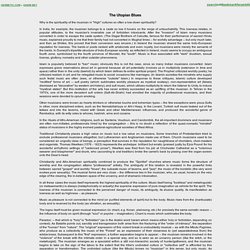

Playing Metallica - Master of Puppets in Zurich, February 19 2011. Metallica’s Lars Ulrich ‘Pirates’ His Own Album. It's been nearly nine years since Lars Ulrich became one of the most vocal opponents of Napster and the generation of file-sharers it spawned.

Not one to speak about something he has no experience of, Ulrich has just admitted downloading his own album, Death Magnetic, and it was "bizarre". In April 2000, Lars Ulrich launched his vocal campaign against file-sharing service Napster. After discovering that Metallica’s entire back catalogue could be found on the service he could hardly contain his anger and by July 2000 he was testifying before the Senate Judiciary Committee. Of course, Napster was dead and buried a long time ago but thanks in part to Ulrich, the destruction of the service led to the creation of many others, most of which carry the entire back catalogue of Metallica to this day – along with that of every other band in the world with a respectable following. However, the once vehemently anti-p2p Ulrich came out with a softened stance. Justify Your Shitty Taste I: Metallica’s “St. Anger”
Almost every band has that album: you know, the critically and/or commercially reviled dud in an otherwise passable-to-radical back catalog.

Well, every Wednesday morning, a Decibel staffer or special guest will take to the Deciblog to bitch and moan at length as to why everybody’s full of shit and said dud is, in fact, The Shit. To kick it all off, Kevin Stewart-Panko gets fran-tick-tick-tick-tick-TICK-TICK-TOCK for Metallica’s eternally filmic St. Anger. Back when I was deeply ensconced in the world of post-graduate academics, and of the belief that a higher—and then an even-higher—education would get me somewhere in life (it didn’t), one slice of advice I received from my weathered colleagues was, when writing an exam, to jump around and complete a couple of easier test questions before diving head-first into the brutally difficult material. We’ve all received similar advice; “baby steps” is how most of us understand the process.
Let’s be honest here—if St. TRACKLIST 1. Amazing Tron Dance performed by Wrecking Orchestra [Better Quality] Niki & The Dove - The Fox [OFFICIAL VIDEO] LAIBACH / OPUS DEI / LIFE IS LIFE. WORLD ORDER "2012" Power of Pentatonic Scale - Demonstration by Bobby McFerrin. The Utopian Blues. Why is the spirituality of the musician in "High" cultures so often a low-down spirituality?

In India, for example, the musician belongs to a caste so low it hovers on the verge of untouchability. This lowness relates, in popular attitudes, to the musician's invariable use of forbidden intoxicants. After the "invasion" of Islam many musicians converted in order to escape the caste system. (The Dagar Brothers of Calcutta, famous for their performance of sacred Hindu music, explained proudly to me that their family had not converted in Mughal times -- for worldly advantage -- but only much later, and then as Shiites; this proved that their conversion was sincere.) In Ireland the musician shared the same Indo-European reputation for lowness.
Islam is popularly believed to "ban" music; obviously this is not the case, since so many Indian musicians converted. Traditional Christianity places a high value on music but a low value on musicians. And what music! . . . . Thanks to: An Introduction to Historical Tunings. Or if G vibrates at 100 cycles per second, then B vibrates at 125, and so on.

(If you'd like this explained in more detail, visit my Just Intonation Explained page.) The size of a pure 5:4 major third is 386.3 cents, a cent being one 1200th of an octave, or one 100th of a half-step. Since an octave is 1200 cents, by definition, it is easy to see that three pure major thirds (3 x 386.3 cents = 1158.9) do not equal an octave. That's the whole problem of keyboard tuning, where you're limited to 12 steps per octave.
Where do you put the gaps in your chains of perfect major thirds? A pure perfect fifth is a 3 to 2 frequency ratio; if vibrates at 440 cycles per second, then E vibrates at 660 cycles per second. Let's look at the meantone solution. Relating Tuning and Timbre. This is the full text of the article (more or less) as it first appeared in Experimental Musical Instruments.

It was the catalyst for much of the work that resulted in Tuning Timbre Spectrum Scale, and it contains links to computer programs that will make it easy for you to draw dissonance curves yourself. Key Color. Just Intonation Explained. You can figure out the rest.

There is a rather complicated formula for figuring out how many cents large an interval is: Divide 1200 by the logarithm of 2. If you use base 10 logarithms (any base is permitted), 1200/log 2 = 3986.3137... For any ratio n/p, the number of cents in the interval is log (n/p) x 1200/log 2 If you're using log 10, then cents = log (n/p) x 3986.3137... Using this formula, we can obtain the following interval sizes: 4335 - Music Sound Generator Flash dammit. The Essential Secrets of Songwriting Blog.